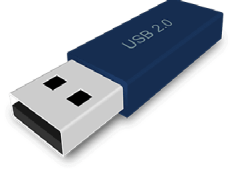Protect Your Data
The computer user wants not to have any specific files, folders or software in the wrong hands with the necessary data and information. Your personal data is an important part of your privacy. On the hand of the wrong person, you will not only be able to open your required documents, but also fear of being copied, changed, and even deleted altogether. Some software also exists in the market to protect the files and folders from the reach of strangers, but the methods available inside the operating system as the first stairs of security can also be tried.

Few people know that some good features exist in Windows to maintain the privacy of data. You can not only password protect the data of your essential files, but also save the file yourself unauthorized copy-paste or delete. If you want, you can also encrypt them which only the authorized user can read.
Document Protection
Most people use Microsoft Office to work, which includes software such as Word, Exle, PowerPoint etc. The password can be protected when creating files in these softwares. There are two levels of this security. If you want, you can also ban files without opening the correct password. Every time a password is requested, password will be asked and an error message will be shown if the correct password is not given. It may also be that you want to allow the file to be visible, but you want to make sure that no one can change anything in it. You can choose one or both types of security in Microsoft Word, Exle, PowerPoint etc.
In Microsoft Word, after going to Tools to Protect a file from a file, click Options. Now click on the Security tab in the dialog box which opens. You will see the file encryption options for this document at the top. Under this, you can enter your password in the text box in front of the password to open. Pressing the Ok button will save your document password. Now the file will be opened only if this password is provided.
If you want your document to be opened but can not make any changes in it, then go to File sharing options for this document via Tools-> Options-> Security as before. Now enter your password in the text box next to Password to modify. Permanently enter your instruction by pressing the Ok button, and simply, people will be able to read your document but the freedom to make changes in it will be found only on the right password. In Microsoft Excel and PowerPoint, you can also password protect your documents in a similar way.
To repeat the same process in Microsoft Word 2007, open the menu by clicking on the left mouse button and the top of the Button button. Now click Save As, which will open the File Saveing dialog box. Open the General Options menu by clicking the Tools button at the bottom left of the left side.
Now the dialog box which will open, file encryption options for this document and file sharing options for this document option will be displayed. In order to stop the file from being opened, the password can be entered in the text box in the second option to prevent editing of its content first and its contents. After entering the password, press Ok button. Your document has now become much safer than ever.
Zip File Protection
To keep their files safer, they can be inserted into a password-protected zip folder. For this, the essential features exist only in Windows. First place where you want to place your protected files in a zip folder. Right click on that place. Now a Context menu will appear in which New and then click on Compressed (zipped) folder. A compached (zip) file will be created at that place. If you want, you can give it a favorite name. Copy and paste your files and folders into it.
Now click on Add a password in the File menu that appears on the left side above. The small dialog box will open, in which you can enter your password. All files will be password protected. Try opening, copying, or renaming any of these files. You will not be able to do this without giving a password.
Please note two things here. First, this feature will not be available in the hard disk with the FAT32 partition. For this, it is important to use the partition of the NTFS file system. Well you are uncomfortable because usually all of these Windows computers use the same file system nowadays. Choosing file system options is sought while installing Windows. NTFS is a new, more powerful and safe file system. FAT32 is an old file system with limited capabilities.
The second thing is that the contents of this type of geded folder can be protected even if the password is protected. That is, the names of the files and the basic information related to them, which are displayed through the Properties menu.
If you want to make your file completely invisible, then put this gyamed folder in a second geded folder, which is also password-protected automatically. Now the contents inside the upper gapped folder (inside the zip folder) will appear but can not be opened without providing a password. If you want to delete the password then the option given in the File menu.








Leave a Comment